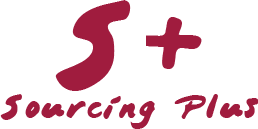As illustrated in the article "The Procurement Dilemma: Short-term Savings or Long-Term Shareholder Value?" Journal of Business Strategy, volume 37 issue 6 , Nov. 2016, for many purchasers, buying for less is considered "value creation", while strategists know that it is merely defending a position if all competitors apply the same tactics and obtain similar results.
Creating Shareholder Value from Supplier Management
Identify the suppliers that are essential to developing and maintaining competitive advantages
Understand the source of those competitive advantages, the skills and capabilities of the suppliers that must be protected to secure the competitive advantages
Develop a strategy to enhance those competitive advantages and protect them from your competition
The Value Of Exclusivity - Capturing a Supplier's Unique Skills
The brief overview of supplier management history illustrates how Procurement / Supplier Management has evolved from its administrative role by impacting profit through tactical excellence in negotiation, leveraging the full scale of the organization. Then it was integrated into the operations. Strategic decisions on organization and cross-functional interactions drove a reduction of the total cost of ownership further contributing to profit.
Today, Procurement must develop suppliers to exploit quickly their skills and isolate them from competition. It contributes to shaping supplier's strategies to speed entry into new markets. It is about seamless transfer of information from the suppliers' development labs to the final consumers and back. That is the reason why Procurement must understand the life-cycle value creation potential of an item, not only as a driver of the Total Cost of Ownership but, more importantly, as a driver of product pricing through the premiums provided by exclusivity, and market growth for the company.
Call to Action
Concentration in many industries and the lowering of trade barriers have removed the price umbrella provided by marginal players. Most likely, the remaining competitors have their tactical operation effectiveness similar to yours. So you must lead your operation teams to focus on capturing differentiating competitive advantages. Procurement is the most promising area to capture a sustainable lead in your industry. The principles illustrated above may appear simple. Nevertheless, after years of focus on cost, and in organizations where each function works too much in isolation, this transition is a challenge for the top executives of most leading corporations. It is never too late to start, but in this field, it is difficult to catch up. Once the prime properties in the supplier leverage game have been captured, they rarely change hands. Today is the right time to make the capture of supplier provided competitive advantages a prime focus of your organization
Leaders in the Development of Competitive Supplier Strategies
A few companies are known for practicing this approach: Frito-Lay, Nokia, Numico (Danone), and a few others have quietly but decisively built specific approaches to manage suppliers that can deliver true competitive advantages. Consulting firms like McKinsey have looked at those issues as well.
